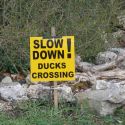There’s a free Sofia walking tour with no sign up required so we show up at the Palace of Justice, along with about 75 other people. It’s a volunteer project with young guides, mostly between twenty-five and thirty-five it seems. Have read a number of their bios online and they’re an impressive bunch, mostly with professional qualifications in the arts, history, political science, or law. We’re with Kris, a young man with a nice balance of humour and information. In two hours we get the low down on about twenty monuments, buildings, and sites in central Sofia, as well as a quick overview of its history. He’s helped by a couple of geographical and historical facts. The current centre of Sofia has always been the centre and so each successive wave - Thracian, Roman, Slav, Ottoman, Russian - has left its mark in the heart of the city. The modern city is built on top of preceding layers.
There has been considerable excavation. As in Athens, the construction of the Metro involved the uncovering of a stunning amount of the ancient city, though Roman, of course, rather than Greek. And took, with the help of archaeologists, forty years. No time to go in the buildings, but a number of brief glimpses, photo ops and explanations. The oldest part has Roman ruins as well as St George’s Rotunda - round, red brick, fourth century, and still in use. Wedding photos amongst the ruins seem popular, and we pass a couple of wedding parties. The original subterranean hot springs still function too, now with taps attached and old ladies bringing plastic containers to collect the mineral water. It used to be the source of water for baths when homes lacked running water. The temperature is supposed to be 37 degrees - so pretty well body temp. The underground ruins share territory with the Metro, so people pass by them daily in the city centre and are encouraged to share the space rather than its being entirely roped off or out of bounds.


